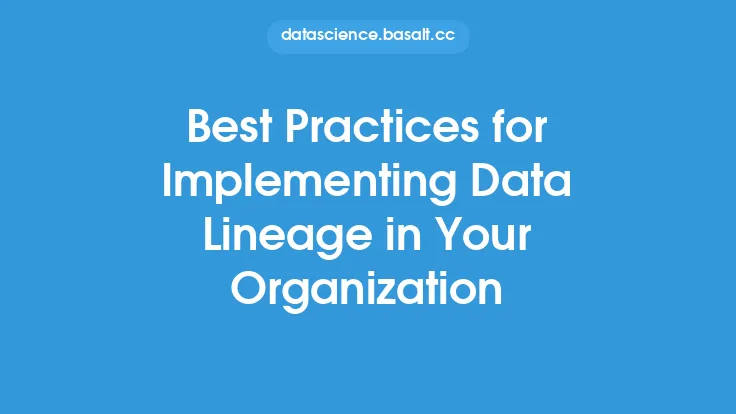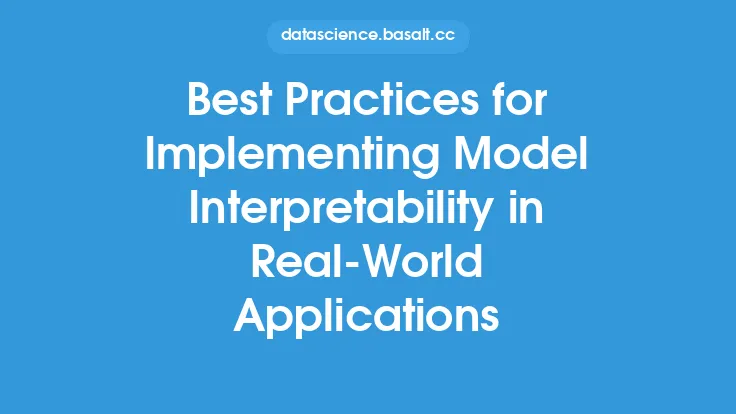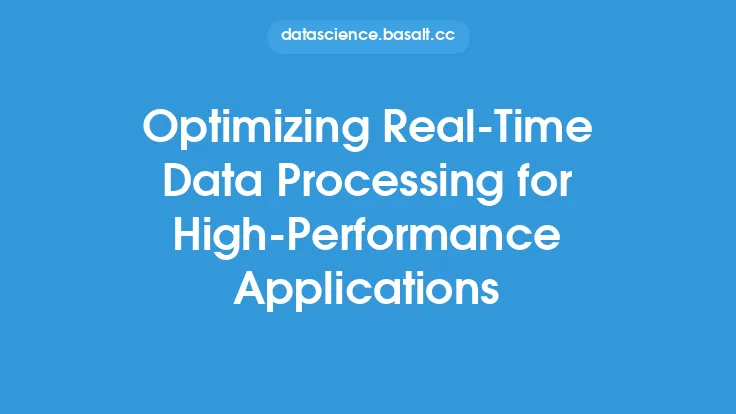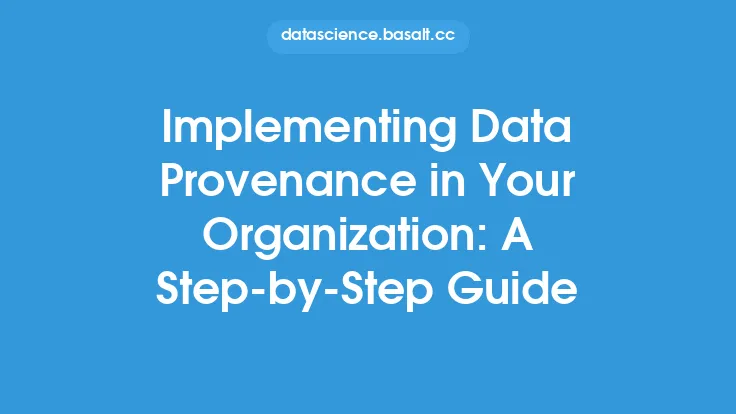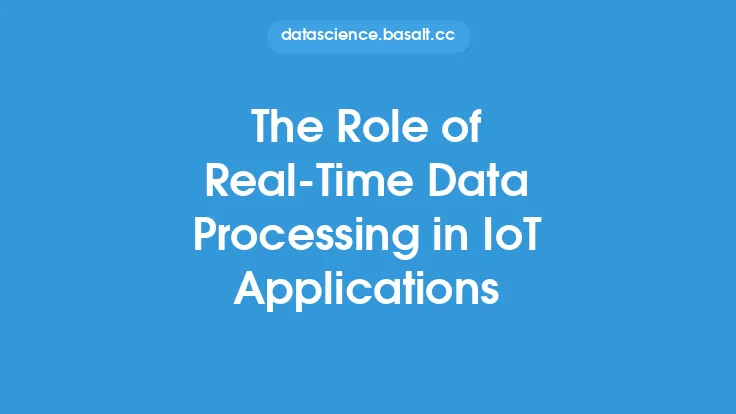Implementing real-time data processing in an organization can be a complex task, requiring careful planning, execution, and maintenance. Real-time data processing involves the ability to process and analyze data as it is generated, allowing organizations to make informed decisions and respond to changing conditions in a timely manner. To achieve this, organizations must have a solid understanding of the best practices for implementing real-time data processing.
Understanding the Requirements
Before implementing real-time data processing, it is essential to understand the requirements of the organization. This includes identifying the types of data that need to be processed, the frequency of data generation, and the desired latency for processing and analysis. Organizations must also consider the scalability and reliability requirements of their real-time data processing system, as well as any regulatory or compliance issues that may apply. Additionally, understanding the trade-offs between latency, throughput, and accuracy is crucial in designing an effective real-time data processing system.
Choosing the Right Technology
The choice of technology is critical in implementing real-time data processing. Organizations must select technologies that can handle high volumes of data, provide low-latency processing, and support scalability and reliability. Some popular technologies for real-time data processing include Apache Kafka, Apache Storm, Apache Flink, and Apache Beam. Each of these technologies has its strengths and weaknesses, and the choice of technology will depend on the specific requirements of the organization. For example, Apache Kafka is well-suited for high-throughput and provides low-latency messaging, while Apache Flink is designed for high-performance and provides support for event-time processing.
Designing the Architecture
The architecture of the real-time data processing system is also critical. Organizations must design a system that can handle the volume and velocity of data, as well as provide scalability and reliability. A typical architecture for real-time data processing includes data ingestion, processing, and storage components. Data ingestion involves collecting data from various sources, such as sensors, logs, or social media. Processing involves transforming and analyzing the data, using techniques such as aggregation, filtering, and machine learning. Storage involves storing the processed data in a database or data warehouse, for later analysis and reporting.
Ensuring Scalability and Reliability
Scalability and reliability are essential for real-time data processing systems. Organizations must design systems that can handle increasing volumes of data, as well as provide high availability and fault tolerance. This can be achieved through the use of distributed systems, load balancing, and replication. Additionally, organizations must implement monitoring and alerting systems, to detect and respond to issues in a timely manner. For example, using a distributed streaming platform like Apache Kafka can provide scalability and reliability, while using a load balancer can ensure that the system can handle increasing volumes of data.
Implementing Data Quality and Governance
Data quality and governance are critical in real-time data processing. Organizations must ensure that the data being processed is accurate, complete, and consistent. This can be achieved through the use of data validation, data cleansing, and data normalization techniques. Additionally, organizations must implement data governance policies, to ensure that data is handled and processed in a secure and compliant manner. For example, implementing data validation rules can ensure that the data being processed is accurate and complete, while implementing data governance policies can ensure that sensitive data is handled and processed in a secure manner.
Monitoring and Optimizing Performance
Monitoring and optimizing performance are essential for real-time data processing systems. Organizations must implement monitoring systems, to detect and respond to issues in a timely manner. This can include monitoring metrics such as latency, throughput, and error rates. Additionally, organizations must optimize the performance of their real-time data processing system, by tuning parameters, optimizing algorithms, and leveraging hardware and software resources. For example, using a monitoring tool like Prometheus can provide real-time metrics and alerts, while using a performance optimization tool like Apache Spark can optimize the performance of the system.
Security and Compliance
Security and compliance are critical in real-time data processing. Organizations must ensure that their real-time data processing system is secure, and that sensitive data is handled and processed in a compliant manner. This can be achieved through the use of encryption, authentication, and access control techniques. Additionally, organizations must implement compliance policies, to ensure that data is handled and processed in accordance with regulatory requirements. For example, implementing encryption can ensure that sensitive data is protected, while implementing access control policies can ensure that only authorized personnel have access to sensitive data.
Conclusion
Implementing real-time data processing in an organization requires careful planning, execution, and maintenance. By understanding the requirements, choosing the right technology, designing the architecture, ensuring scalability and reliability, implementing data quality and governance, monitoring and optimizing performance, and ensuring security and compliance, organizations can build effective real-time data processing systems. These systems can provide organizations with the ability to make informed decisions, respond to changing conditions, and gain a competitive advantage in their industry. By following these best practices, organizations can unlock the full potential of real-time data processing, and achieve their business goals.
